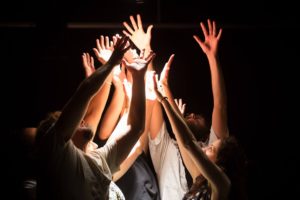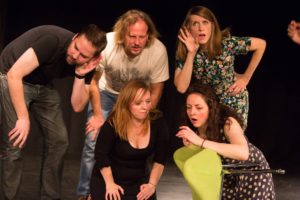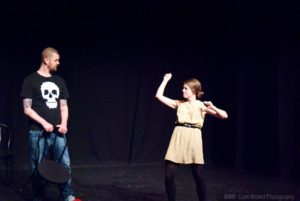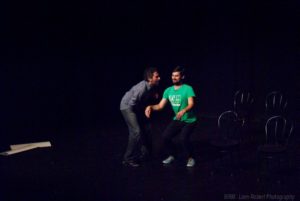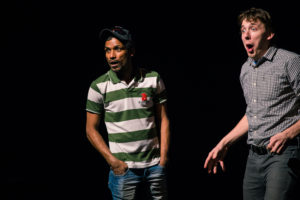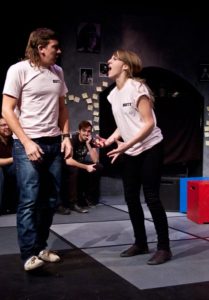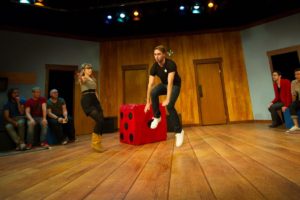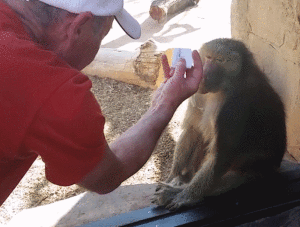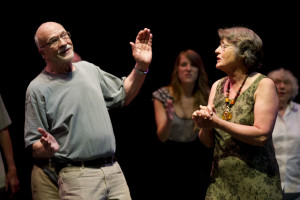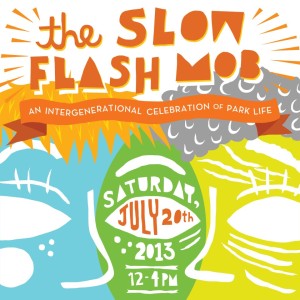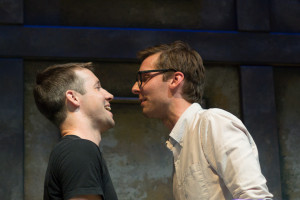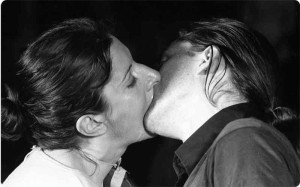The Thinking Steps
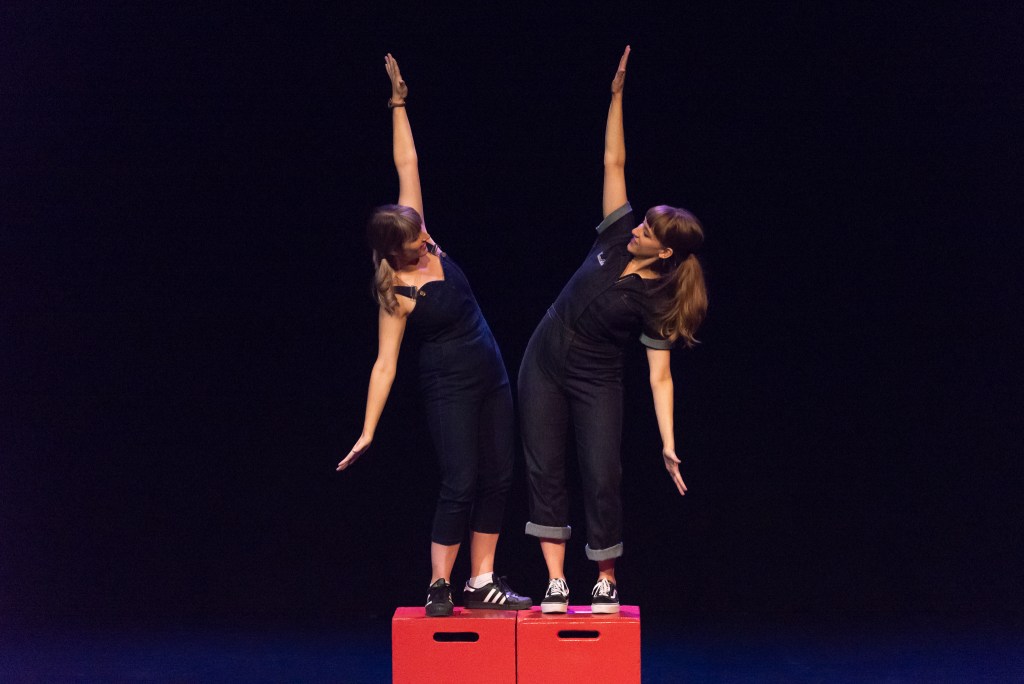
Have you ever noticed that most improvised scenes start with an improvisor moving three steps down stage centre?
The audience yells a suggestion, or an edit happens, and the improvisor moves, as themselves, downstage. Once they hit centre stage, they make a choice. This moment is almost imperceptible, so you have to really look for it. Three neutral steps down stage, while we think: “I’m starting a scene. The suggestion is fire. I’ll be a firefighter.”
I think this is why a lot of shows have blackouts or a countdown off the top of scenes, to give time for this moment.
I call this phenomena The Thinking Steps; the time it takes for us as improvisors to make a choice.
These three steps aren’t necessarily bad. They are an opportunity to think; our processing time, where we repeat the suggestion a few times to find inspiration, where our director brain is thinking about what the show needs at this moment. “How can I bring a different emotional energy to the show?”
I hear a lot of students talk about “getting out of your head” and “being in the moment” as the ultimate goal for improvisors. They’re learning this language in books, or from other teachers, or heck, movies about improv. For me, “getting out of your head” is a misnomer. Planning and thinking can help us on stage – looking for the big picture, assessing what the audience might be craving, remembering notes we’ve been given to improve our performance, keeping each other physically safe.
Being “in our head” isn’t bad. I think the goal should be less about not planning, and more about not judging.
Judgement is what stops us from editing, what makes us second guess our impulse, and what allows us to have three different ideas that we waffle on as we take three steps downstage.
When you get off stage, and you feel like you were “in your head”, what exactly were you thinking of? Were you noticing a team mate who hadn’t been in yet, and hoping to start something with them in the next beat? Were you thinking about making sure you find your light this week? Were you extra aware of how the audience was reacting negatively to certain content and clocking that you should try to change the tone your show? I would argue that this kind of thinking is not bad, in fact, it is what keeps us safe and working toward a goal as an ensemble.
And sure, in this art form, there are those magical shows where you get off stage and it feels like every choice was effortless, that your body was leading, and that impulse was queen. But if I am being honest, the majority of the time, I find myself half in my impulse and half in my head. My experience in a show often depends on not if I am in my head, but where my head is at.
Our own self judgement, or the perceived judgment of others, slows us down, causes us hesitate, makes us second guess, and chips away at our commitment. Examples of the kind of thinking that may not be serving you would be: beating yourself up about a choice you made, not listening to your scene partner because you are worrying about a part of the show upcoming, or rolling your eyes at an improvisor from the backline for a choice they stuck with. Once judgment is present on stage, it affects everyone. Performers and audience. It allows everyone to think, “you’re right, this isn’t that good”.
Lately, I’ve been challenging my students and myself to make a choice right away. As soon as there is the impulse to initiate a scene, try and get a choice going. Don’t take the time to travel downstage to decide, just decide. Making a strong choice right away gets us busy so that our judgement can’t creep in.
-An emotional sound (grunt, laugh, yelp)
-A change in the rhythm of your breath (sigh, pant, cough)
-A change to your body (wavy arms, toes that lead, gentle hands)
-A change to your face (furrowed brow, tiny mouth, tense cheeks)
You don’t need to know why you’re doing it, or how you are going to justify it. Just trust you can.

A couple cool benefits:
If there is any tentative energy in your steps downstage, the audience can sense it, and it makes them worried. (Hell, it encourages THEIR judgment) By moving in a specific way, you lessen their sense of fear by not sharing your own.
Making a snap choice right away will make your entrance feel more complete – it will be full of that choice, rather than just being filled with your “neutral” self.
By the time you arrive downstage, you will have a clearer take on who you are, what you feel.
If you make a sound or breath choice, you will also have the added benefit of breathing, which puts you better in touch with your impulse and emotion.
If you make a physical choice, it’s likely the breath or sound will follow, so you’re golden there too.
Plus a fun side effect might be that you start a scene somewhere else on stage where scenes don’t usually happen. If you make the choice from the wing, maybe the scene will travel all over the stage, or take place “way too close” to the curtain. Making a choice right away can take us somewhere unexpected.
I’d like to give full props to Mick Napier, who got me thinking about making emotional sounds to start scenes, Susan Messing, who encouraged me to change my face, and Mike Kennard, who got me thinking about the connection between breath and impulse.

